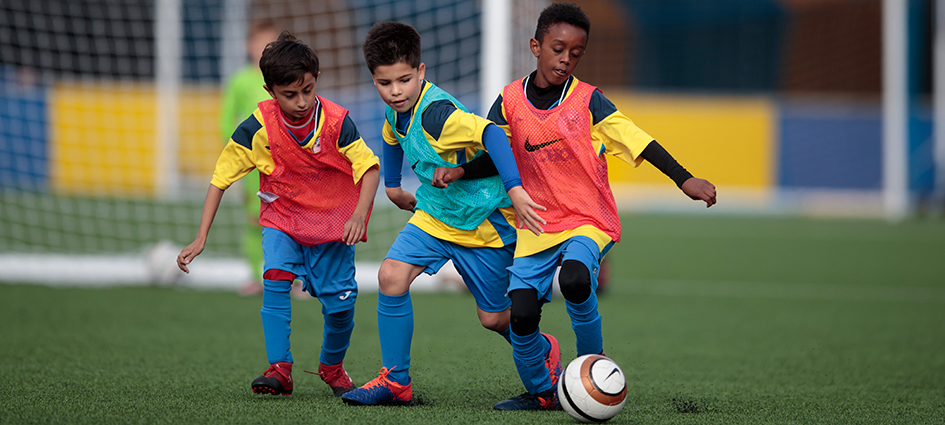
Developing positive and enthusiastic defending
- The Boot Room
- 13 February 2020
Being positive and enthusiastic might sound like a very basic starting point, but when you are in the Foundation Phase, children bring this with them whenever they play, so you can capitalise and build on this.
Whilst defending may not be a high priority for your youngest players, you can still serve this important part of the game up in such a way that they retain their enthusiasm and desire to want to get the ball.Young players will want the ball, so for the ‘in possession’ part of their development you give them their own ball, whilst for the ‘out of possession’ aspect you invite them to get one rather than have it given to them. A benefit of using The England DNA is that by practising one element, you’re also being introduced to another, even though it may not be the main focus of the session.
Every staying on the ball session is an opportunity for other players to get better at taking the ball off someone, so players can get a double hit in the same session.
Young players will be positive and enthusiastic in relation to defending if the adults involved avoid defining the defender as:
- someone who never goes forward and stays in their own half even though all the action is at the other end of the pitch
- someone who avoids taking risks, meaning they put the ball out of play or boot it up the field
- someone who can never start or join in with an attack
- someone who can’t really play and is instructed to give the ball to someone who can.
Whilst there are plenty of really good examples out there, it’s likely that you will all have seen or heard each one of these things in relation to young players and defending.
The DNA demands that this changes.
Being good at taking the ball off someone means that your team will be able to attack and suddenly all of the ‘in possession’ elements come into focus.
The aim is to develop players who have the ability to recognise that if they’ve taken the ball off an opponent and there’s space in front of them, they have the option and the ability to travel quickly with the ball. The modern day defender is comfortable doing this and the modern day coach must encourage it.
In the Foundation Phase it’s almost impossible to identify who’ll play in a particular position when they’re older, so keep the options open for as long as possible. Avoid putting children into attacking or defending boxes and instead keep their enthusiasm and motivation high by allowing them to express their developing skills and abilities in all areas of the pitch.
The England DNA in the Foundation Phase wants the focus to be on taking the ball off the opponent rather than kicking the ball out, as this should be the last resort.
Winning the ball “cleanly” comes from giving players practice at using their body effectively to apply pressure and perhaps force a mistake by the player in possession. Being able to run fast and then slow down quickly to apply pressure on the ball has to be learnt, and each player will do it slightly differently, so appreciate this and work with it.
To help embed positive and enthusiastic defending follow the tips below:
- Emphasise taking the ball off the opponent rather than kicking it out.
- Provide lots of opportunities to refine the use of the body when defending – this is particularly important for the older players as they’ll be more aware of their physical capability.
- Prioritise physical literacy that involves stopping, starting and changing direction.
- Send out a simple message that defending is what you do whilst you’re getting ready to attack.
- Change the perceptions of what a defender is - the modern day wing-back is an integral attacking – as well as defensive – component of the team.
- Work with the player’s natural enthusiasm and motivation to get the ball – this will be combined with more focus, bravery and determination as your players get older.
It’s important to understand that development and learning isn’t a linear process and there will be many ups and downs in both learning and performance. This is absolutely normal. In fact, if it looks too perfect and there are no mistakes being made, it might not be challenging enough.
Young players’ dreams and aspirations tend to turn towards being the goalscorer or the dribbler, but defending can be just as exciting, and indeed as crucial, to any team gaining and using possession.
Help young players realise that they all need to be difficult to beat and good at getting the ball cleanly off their opponents, and then encourage them to attack when they get it. By doing this, the perceptions of what a defender is and what a defender does will change.
To learn more about Foundation Phase DNA, click here.


